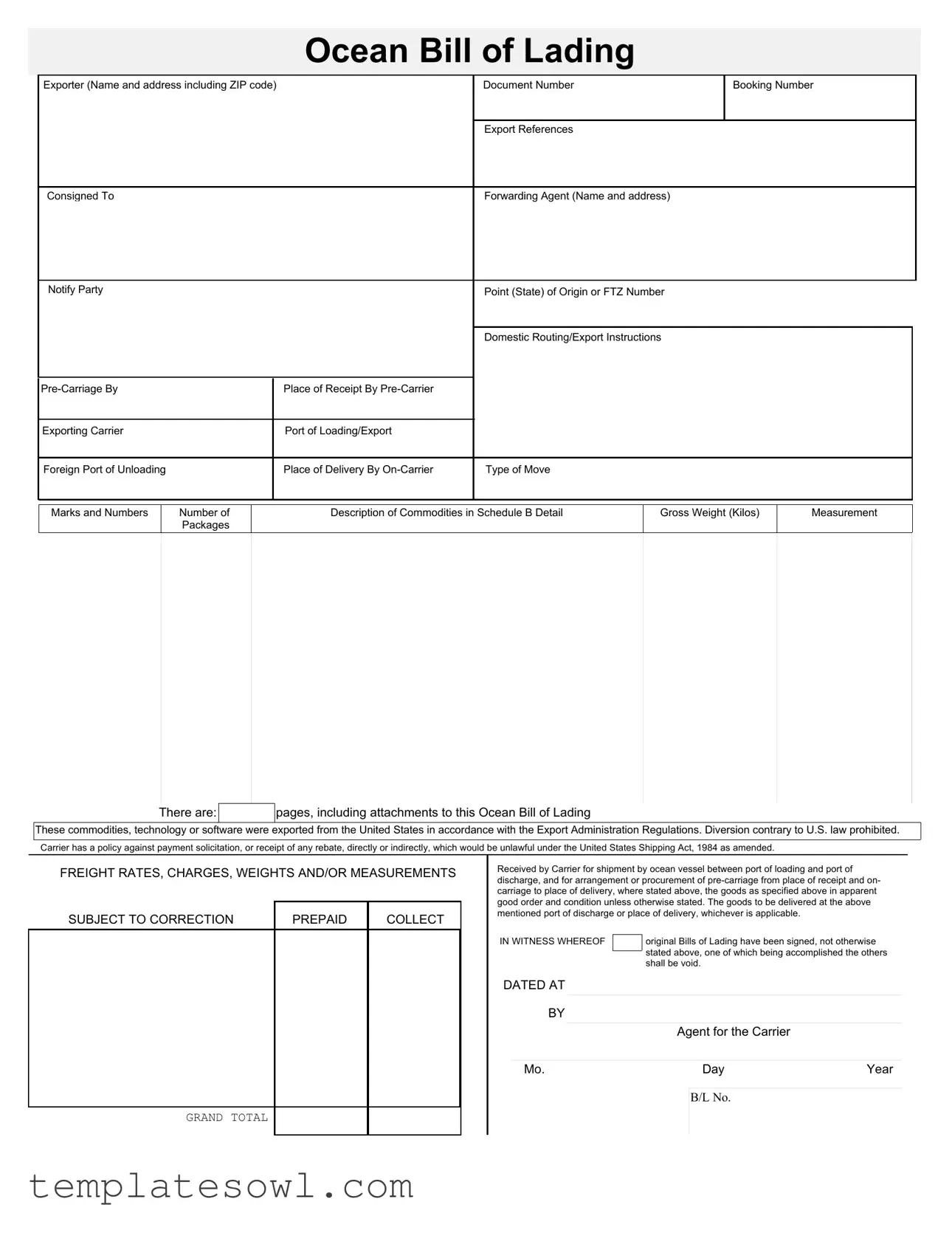What is an Ocean Bill of Lading?
An Ocean Bill of Lading is a key document in international shipping. It serves as a receipt issued by the carrier once the goods are loaded onto the vessel. Additionally, it acts as a contract between the shipper and the carrier, outlining the terms of transportation. This document provides essential details about the shipment, including the exporter’s information, the consignee, and specifics about the cargo itself.
What information is required on the Ocean Bill of Lading?
The Ocean Bill of Lading must include crucial information such as the name and address of the exporter, document and booking numbers, and references regarding the shipment. It also contains details about the forwarding agent, the point of origin, port of loading, and foreign port of unloading. Descriptions of the commodities being shipped, including their gross weight and measurements, are essential to this document as well.
How is the freight charge calculated on the Ocean Bill of Lading?
Freight charges are typically based on the weight and volume of the shipment. The Ocean Bill of Lading indicates whether charges are prepaid or collect. It is important to note that these rates and charges may be subject to correction, ensuring accurate billing according to the actual shipment details.
What are the responsibilities of the carrier as noted in the Ocean Bill of Lading?
The carrier is responsible for receiving the shipment in good order, as stated, and for transporting the cargo from the port of loading to the designated port of discharge or place of delivery. The carrier also commits to arranging the necessary pre-carriage and on-carriage, when applicable. The document outlines that the goods must be delivered as specified unless otherwise indicated.
What does “diversion contrary to U.S. law prohibited” mean?
This statement emphasizes that the shipment being exported must comply with the Export Administration Regulations. It signifies that any unauthorized diversion or change in the destination of the goods is illegal under U.S. law. This restriction is implemented to ensure that exports are controlled and monitored effectively.
Can the Ocean Bill of Lading be voided, and under what circumstances?
The original Ocean Bills of Lading can be rendered void once one original is accomplished, as long as there are no other stipulations provided. It is critical to follow this procedure to prevent any ambiguity regarding ownership or responsibility for the goods transported. As such, careful management of the document is necessary during the shipping process.

